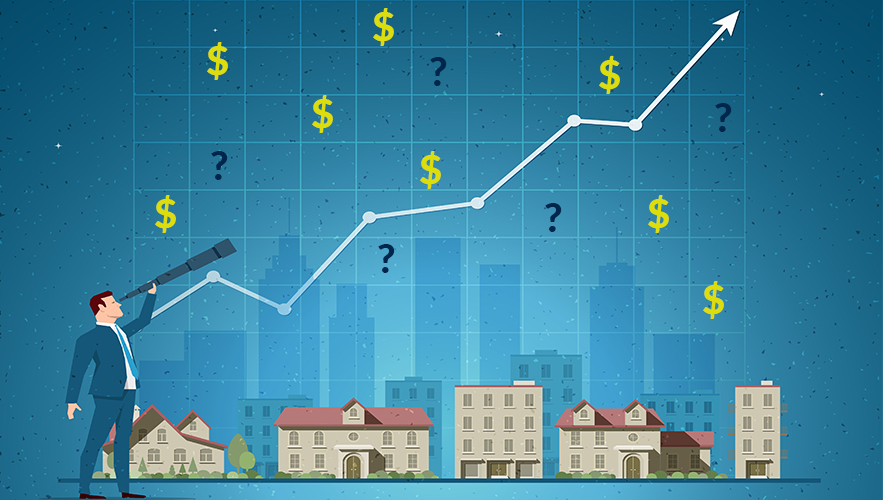How Do I Value a Commercial Property?

Whether you’re purchasing an investment property or evaluating the proceeds of a refinance, it’s important to accurately determine the value of your commercial property. Real estate property is a timeless investment vehicle and when valued correctly, it can be a reliable way to generate a steady return on your money.
Industry experts use the following three ways to determine the value of a property:
(1) SALES COMPARISON APPROACH
The sales comparison approach uses sales comps to review recent sale prices of surrounding “like-kind” properties. Using a multi-family property as an example, when determining a good sales comp, look for a property with the same number of units, bedrooms, bathrooms, square footage, etc. Secondly, you will want to find a property that is in the same condition including factors such as updated kitchens, modern bathrooms, and other unique finishes that sets your property apart from the others in the neighborhood. Lastly, you want to choose a sales comp with a similar location to your own, because properties situated in the same location are NOT all worth the same. Location, Location, Location. This is true, even if they have an equivalent unit breakdown and contain similar updates. Did you know that properties located near key infrastructures such as major highways, train stations, and area attractions will appraise much higher? Absolutely! Good to know, right?
(2) THE COST APPROACH
The cost approach determines a property’s value based on the cost of the land and the structure on it. A simple math formula is used to add the cost of the land plus the cost to complete the structure, which equals the fair market value of the property. For older properties, there are metrics used by appraisers for replacement cost of different building structures. This is not generally the best way to determine the value of an acquisition, as it does not account for the income stream derived from the asset and is just an indication of the “bricks and sticks.”
(3) THE INCOME APPROACH
The income approach is most commonly used for valuing income producing real estate. Simply divide the net operating income by the capitalization rate (NOI ÷ Cap Rate = FMV).
For example, if the NOI is $100,000 with a 5% cap rate, the property value is $2 million.
* Capitalization rates or “cap rates”, differ depending on the market a property is located in. Typically, higher cap rates are used in less desirable markets, and lower cap rates are used in highly sought after markets.
For more information on Cap Rates and other important facts, visit our Blog page.
As mortgage advisors, Progress Capital routinely adds an assessment of value based solely on the Income Approach as part of our loan underwriting packages. This guideline is used by us to advise our clients as to the loan amount they can expect based upon an estimated appraised value that will come further along in the loan process.
Eddie Miro is a Financial Analyst at Progress Capital and is available to advise you on any real estate investments you are considering, as well as help you manage through the commercial real estate acquisition and/or financing process.
